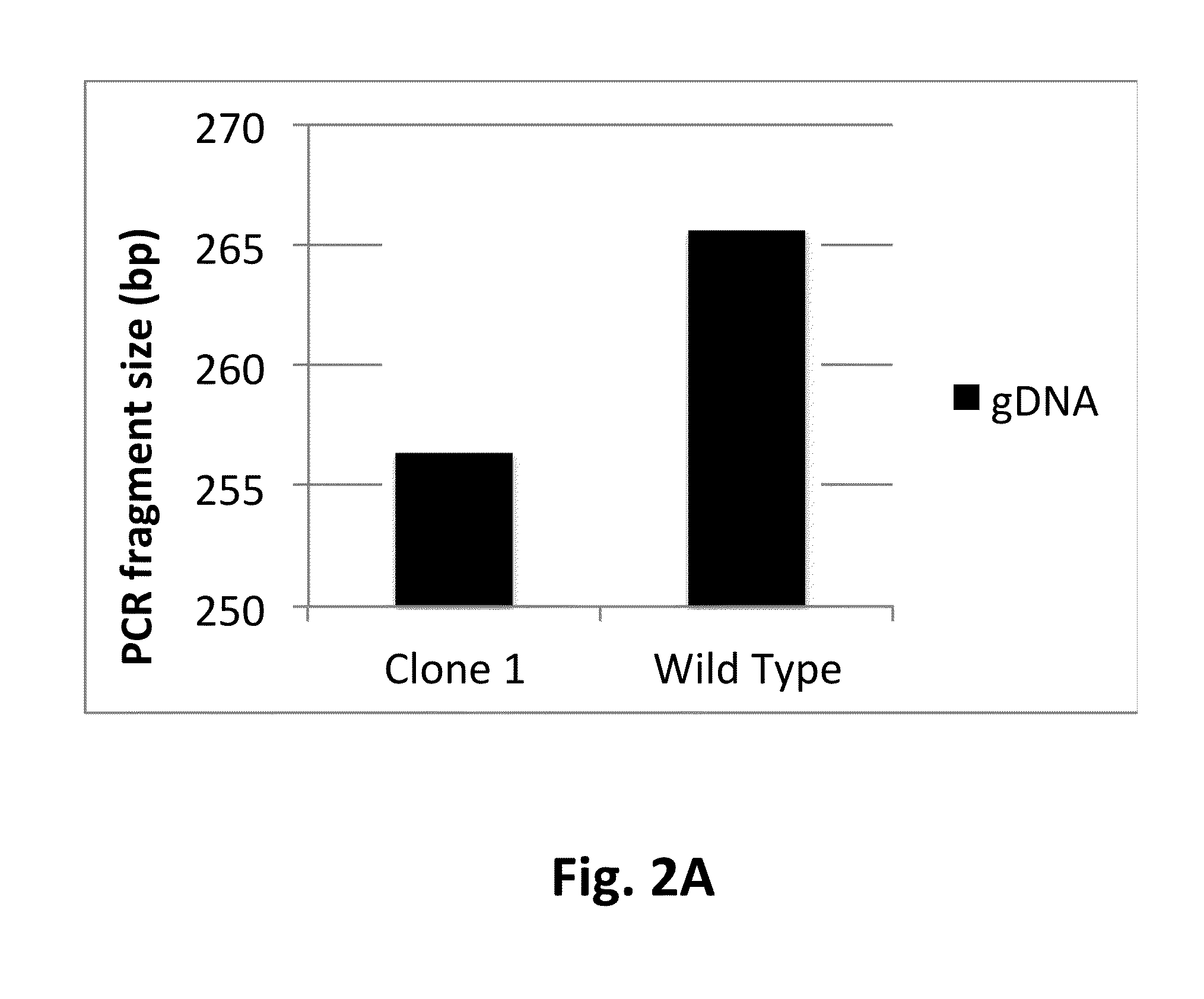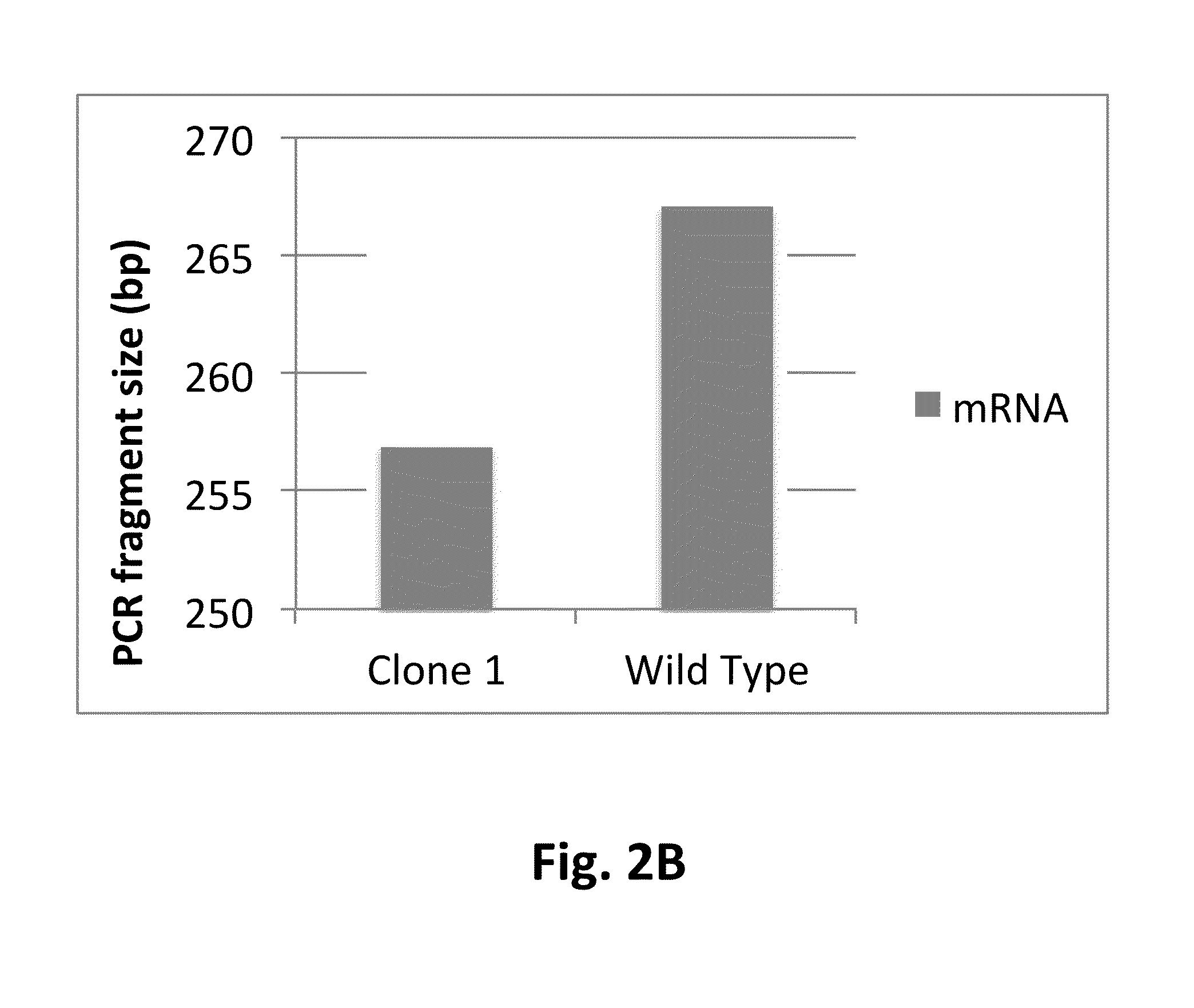Host cell protein modification
- Summary
- Abstract
- Description
- Claims
- Application Information
AI Technical Summary
Benefits of technology
Problems solved by technology
Method used
Image
Examples
example 1
Targeted Disruption of an Esterase Gene in the Host Cell
[0110]To employ disruption of the target esterase gene, i.e. phospholipase B-like 2 gene, of a CHO cell origin, a Type II CRISPR / Cas system which requires at least 20 nucleotides (nt) of homology between a chimeric RNA (i.e. guide RNA) and its genomic target was used. Guide RNA sequences were designed for specific targeting of an exon within the CHO phospholipase B-like 2 (PLBD2) nucleic acid (SEQ ID NO:33) and are considered unique (to minimize off-target effects in the genome). Multiple small guide RNAs (sgRNA) were synthesized for use in the genome editing procedure targeting the following genomic segments of PLBD2 listed in Table 3.
TABLE 3SEQ IDSEQ ID NO: 47SEQNO: 33(nt numbers ofIDnucleotideExon 1 atNO:numbersgenomic locus)genomic DNA sequence38110-139170-1995′-CTGAGGTGTTGCTGAATTGCCCGGCGGGCG-3′39227-198 82-1115′-GACGCGGCGTCCAGCAGCACCGAGCGGACG-3′40182-211 98-1275′-ACCCGCCGGTCTCCCGCGTCCGCTCGGTGC-3′41242-271212-2415′-TGGTGGAC...
example 2
Introduction and Expression of a Monoclonal Antibody (mAb1) in the Candidate Clonal Cell Lines
[0117]Clone 1 and the wild type control host cell line were transfected with plasmids encoding the light and heavy chains of mAb1, a fully human IgG, in the presence of Cre recombinase to facilitate recombination mediated cassette exchange (RMCE) into EESYR locus (U.S. Pat. No. 7,771,997B2, issued Aug. 10, 2010). The transfected cultures were selected for 11 days in serum-free medium containing 400 ug / mL hygromycin. Cells that underwent RMCE, were isolated by flow cytometry. PLBD2 knock out clone 1 and the wild type host cell line produced equivalent observed recombinant population (data not shown). The clone 1 derived isogenic cell line expressing mAb1 was designated RS001, and the mAb1 expressing cell line originated from the PLBD2 wild type host was designated RS0WT.
[0118]Fed-batch production of mAb1 from RS001 or RS0WT was carried out in a standard 12 day process. The conditioned medium...
example 3
Esterase Activity Detection in Unmodified CHO Cells
[0119]Polysorbate 20 or polysorbate 80 degradation was measured to detect putative esterase activity in the supernatants of PLBD2 mutants. Unpurified protein supernatant from CHO cells, and supernatant taken at each step or sequence of steps when subjected to sequential purification steps, was tested for stability of polysorbate. The percent intact polysorbate reported was inversely proportional to the amount of contaminant esterase activity. Unpurified protein supernatant from CHO cells, and supernatant at each step or sequence of steps when subjected to sequential purification steps, was tested in assays measuring polysorbate degradation. The relative levels of intact polysorbate reported is inversely proportional to levels of contaminant esterase activity.
[0120]Degradation of polysorbate 20 was examined to determine the etiological agent responsible for polysorbate 20 degradation in a monoclonal antibody formulation. The buffered...
PUM
| Property | Measurement | Unit |
|---|---|---|
| Fraction | aaaaa | aaaaa |
| Fraction | aaaaa | aaaaa |
| Fraction | aaaaa | aaaaa |
Abstract
Description
Claims
Application Information
 Login to View More
Login to View More - R&D
- Intellectual Property
- Life Sciences
- Materials
- Tech Scout
- Unparalleled Data Quality
- Higher Quality Content
- 60% Fewer Hallucinations
Browse by: Latest US Patents, China's latest patents, Technical Efficacy Thesaurus, Application Domain, Technology Topic, Popular Technical Reports.
© 2025 PatSnap. All rights reserved.Legal|Privacy policy|Modern Slavery Act Transparency Statement|Sitemap|About US| Contact US: help@patsnap.com



